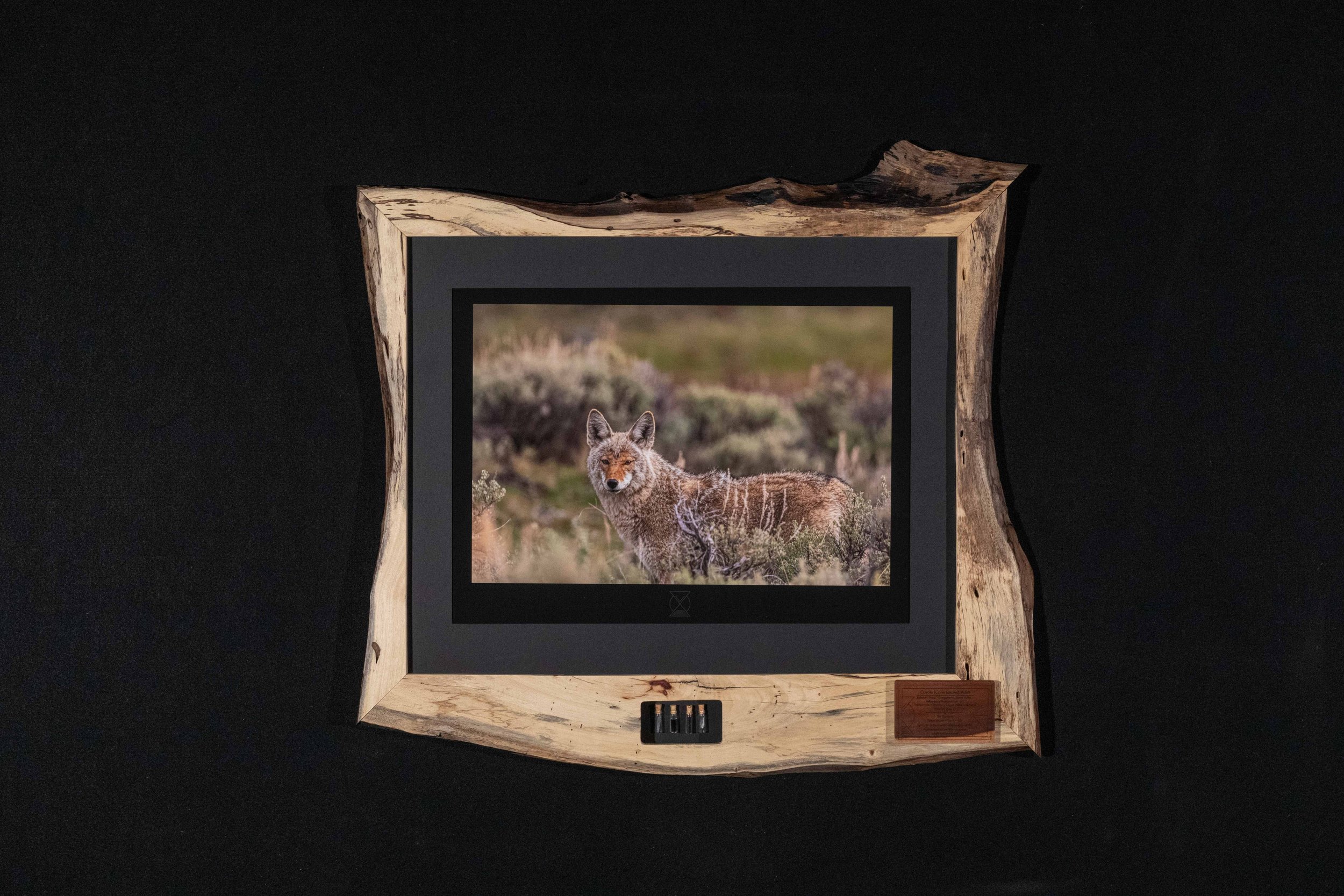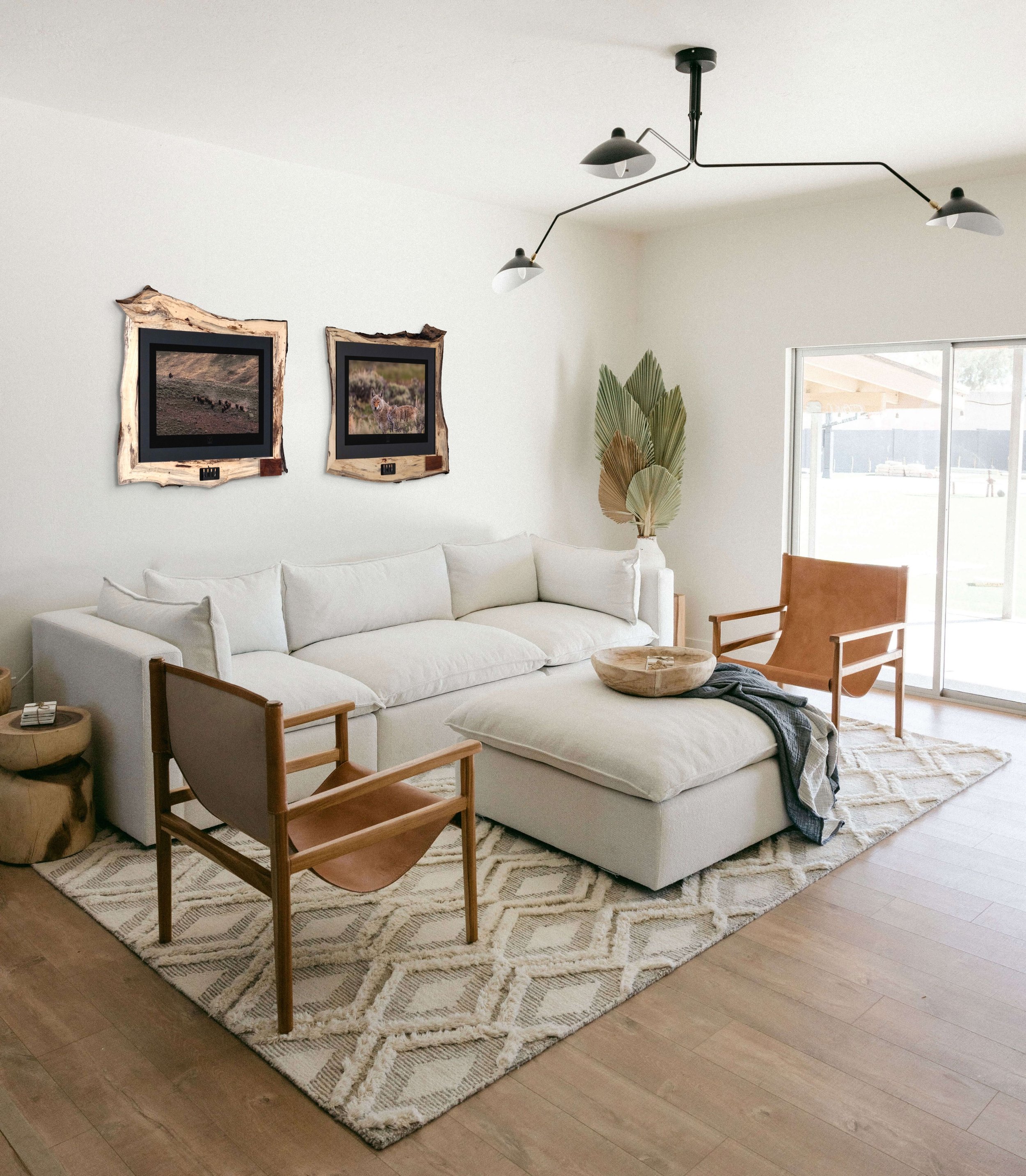Coyote - Lamar Valley, Yellowstone National Park, WY




Coyote - Lamar Valley, Yellowstone National Park, WY
Coyote (Canaris latrans), Adult
I tracked this Coyote back and forth through Lamar Valley on this particular morning and was able to set up in a nice spot where I thought it was going to trot by. It worked out well! This photo was taken 5/15/21 at 8:24 am.
WeForest Donation: $320 (What is this?)
Print Number: 2/3
Print Size: 15 x 22.5
Total Dimensions: 34 x 38
Hanging equipment and certificate of authenticity included.
PHOTOGRAPH
Coyote (Canaris latrans)
The Coyote is a common resident of nearly all of the United States and Canada, excluding Hawaii. It is a member of the Dog family and a slimmer, smaller built individual that a wolf. Easily recognized by their nightly yaps and howls, they are primarily nocturnal, although they often hunt around dawn and dusk as well. From Rabbits to deer they hunt a variety of animals, eat the remains of animals killed by others, and will even forage for fruits and berries in leaner times, they are advantageous eaters. Similar to Wolves they form packs with members all caring for the young, which are born in dens in hillsides. In Summer packs can break up more and then reform in winter months to seemingly take advantage of the better hunting of deer and larger game which are easier to hunt in snow.
LOCATION
Yellowstone National Park, WY
Established in 1872, Yellowstone National Park was the first national park in the United States, and has thus been one for about 150 years. For 10,000 years before, the land was home to many Indigenous Tribes, and many more animals than inhabit the area today. A convergence of the The Great Basin, The Great Plains, and the Columbia Plateau, it is still a special place in this country with a wide array and abundance of life. Having been expanded and more heavily protected over the last century and a half, Yellowstone National Park today stands as the largest intact temperate-zone ecosystems on the planet, preserves over 10,000 hydrothermal features, more than the rest of the planet combined, and is home to the largest concentration of wildlife in the lower 48 states of the United States. That last fact is extremely evident when you are there in person. Although consistently a top 10 most frequented park with between 3 and 4 million visitors annually, the wildlife still exists in droves. I have never experienced the feeling of looking into the past that I feel when I am in Yellowstone. One truly gets a glimpse into the world that existed throughout the United States before this land became the United States. Animals interact with each other and exist in numbers that you simply don’t see throughout the rest of the country. I try to visit once a year to see the ever quickening changes and collect more photos of one of my favorite places I have ever visited.
FRAME
Woman’s Tongue (Albizia lebbeck)
Albizia Lebbeck, as it is scientifically known, is native to the Indian subcontinent and Myanmar. It is commonly grown in Australia and other tropic and subtropic places. I get my supply of Woman’s Tongue from Key West, Florida where it is invasive. A wood salvager who has removed the trees from construction sites and properly mills and drys the wood rather than sending it to the dump is my source for a lot of my wood.
THE ELEMENTS
Fire, Water, Earth, and Air
In the display case in the bottom of the frame, four items are preserved glass vials. The items represent the elements: fire (wood charcoal), water (mineral oil), earth (soil), and air (a milkweed seed). I include these items in my work as a symbol of the interconnectedness of all life on earth, and as a reminder that humans must do better.
THE PLAQUE
I engrave a wooden information plaque for each work. The plaque includes what the photograph is of, the location of the photograph, what type of wood the frame is made of and where I got the wood from. The plaques also explain what the vials are in each display case, and even state the meaning of my logo. The plaques are attached magnetically and can be removed to read or to store on the back of each frame if you prefer not to have it displayed on the front.

